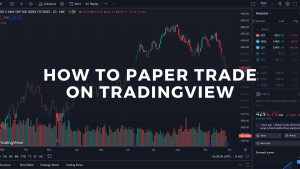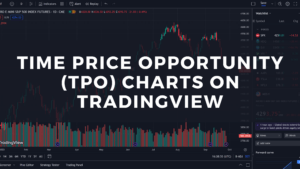This article on Futures Vs Forex is the opinion of Optimus Futures.
Forex markets are the most liquid in the world.
George Soros famously made $1 billion in a single day betting against the British Pound in 1991. (An outlier performance by all means)
Yet, many retail traders and investors ignore this market entirely for a variety of reasons including:
- Brokers who may trade against their clients
- Some Jurisdictions with a “relaxed” regulatory environment
- Over-the-counter nature of the market
- Wide spreads
- High initial margins
Yet, they simply don’t offer enough flexibility for an average retail trader.
That’s why Forex micro futures was a game-changer.
Retail traders and investors now enjoy the same capital efficiency and diversification as standard futures with the added flexibility of smaller contracts.
In this article, we’ll explore the world of futures and micro futures, compare that to Forex markets, and help you understand the similarities, differences, and benefits of these products.
Futures – A Brief Introduction
Futures products are a unique derivative mechanism that traders and investors can use for both speculation and hedging. They employ leverage to control more of an asset than you could otherwise.
Dating back to the Dojima Rice Exchange in 1730, futures contracts lock in a specific price for a product, index, or basket of goods at some date in the future.
Currency futures are a derivative contract that follows a specific currency pair where one is the U.S. Dollar.
Unlike options contracts where the buyer has the right to execute the contract, futures come with an obligation.
That means physical assets like oil require the buyer to take delivery of the product, while index futures are cash-settled.
Currency futures are physically settled which means anyone holding those products at expiration will be required to take delivery of the currency product itself.
Futures products trade continuously from 6:00 P.M. EST on Sunday until 5:00 P.M. EST Friday with a one hour break from 5:00 PM – 6:00 PM EST each day.
Micro Futures Contract Sizes
Futures contracts come in three varieties: regular, mini, and micro.
The relationship between these three is as follows:
- Regular = 1
- Mini = 1/2
- Micro = 1/10th
Normally, futures contracts control an enormous amount of notional currency. For example, one contract on the U.S. Dollar British Pound Sterling pair controls 62,500 pounds.
Micro currency futures contracts control 1/10th the amount of regular contracts, allowing more flexibility and control while maintaining the same capital efficiency.
In general, you can find micro futures on a wide variety of asset classes with stock market indexes being some of the most popular.
With the expansion of micro futures contracts into currencies, traders can create more comprehensive speculation and hedging strategies across multiple asset classes with different correlations.
Micro Futures Forex Products
Currently, micro futures forex products are available in 7 major currency pairs against the U.S. dollar:
It’s important to note that each tick is different depending on which contract you choose.
For example, each tick in the Australian Dollar micro futures contract is worth $1 US while the Canadian Dollar micro futures are priced in Canadian Dollars.
Here’s an example of what you might find in a price ladder for the Australian Dollar micro futures:
Considering that on a slow day Australian Dollar futures might trade in a range of 50 ticks, a swing of $50 per micro contract is much more manageable than $500 per regular contract, especially for smaller accounts.
What is Forex Trading and How does it work?
Foreign exchange (AKA Forex) trading aims to profit off the differences between the currencies of two countries called currency pairs. These are traded in the Forex Markets where global finance exchanges one currency for another in order to facilitate cross-border commerce.
Traders purchase or bet against one pair versus another such as the British Pound against the U.S. Dollar. As one currency’s value changes relative to another, the trader accumulates profits or losses. They close out their position by reversing the transaction.
Going back to the earlier example with George Soros, the billionaire investor bet that the British Pound would devalue relative to another currency. Employing leverage, he took billions of British Pounds and exchanged them for other currencies.
When the British Pound’s value fell relative to those currencies, he then bought back the British Pound at a lower price and closed out the trade for a massive profit. (Past performance is not indicative of future results)
Futures Vs Forex Trading – The Main Differences
Forex trading and Forex Futures trading both aim to profit off the change in value of one currency against another, known as a currency pair. Additionally, both employ leverage to capture profits from small movements in exchange rates
However, there are some key differences you should be aware of.
Centralized Exchanges VS OTC Markets | Counter Party Risks
Forex trades in what’s known as over-the-counter (OTC) markets. These are decentralized markets where your orders are routed and cleared through multiple entities throughout the globe.
Forex futures, on the other hand, trade and clear through one centralized exchange like all other futures contracts.
Why does this matter?
Centralized exchanges like the Chicago Mercantile Exchange (CME) provide a standard of service in terms of contracts, order execution, and security. Additionally, the CME is able to account for more offsetting positions including futures options to provide you with better margins.
Decentralized markets leave traders open to what’s known as counterparty risk, or the risk associated with the entity executing and holding your orders. While not common, counterparty risk has a higher prevalence in OTC markets than in centralized exchanges. Should your counterparty fail, you can be left with serious losses and financial obligations.
Along with counterparty risk, as a trader, you are subject to the data and order feeds provided by your broker. Without a central hub or ‘source of truth’, you may experience order fills that vary dramatically from the best price available at that time.
Forex market traders may also experience issues with order speed execution called ‘speed bumps.’
Currency Futures Vs Spot Forex
Currency futures are legally binding contracts that obligate buyers and sellers to execute a predetermined exchange rate trade at the settlement date. However, no currency is exchanged until the settlement date.
Spot forex trading is the actual exchange of one currency for another. Typically, delivery of the currency occurs within two days.
Your Broker Can’t Trade Against You in Futures
In forex markets, there are two types of brokers: A-book (AKA straight through processor) and B-book.
A-book brokers charge a commission or spread and pass the order along to a financial institution to act as the counterparty.
B-book brokers, which are more common, can and often do act as the counterparty themselves. That means they take the opposite side of the trade from their clients, which many see as a conflict of interest.
Because forex futures trade through a centralized and regulated exchange, your futures broker cannot act as the counterparty. Thus, they have no incentive to act against you.
More Diversification in Futures
You can find micro futures on a wide variety of assets including indexes, currencies, treasuries, energies, cryptocurrencies, and metals.
Access to a broad set of asset classes allows retail traders to construct comprehensive speculation and hedging strategies that were once only accessible by those with larger accounts.
Additionally, you can find additional derivatives to work with such as options on futures that aren’t available through traditional forex trading.
Futures vs Forex Trading Cost Considerations
There are two main cost considerations with Forex Futures and Forex.
First, are the direct costs associated with the transactions. Forex Futures have clear, upfront pricing that doesn’t change. Forex trading can either have commissions or use spreads.
Spreads are the difference between the bid (price you can sell) and offer (price you can buy). Wider spreads mean that you get a price much worse than the spot price. These are often measured in ‘pips’ or 1/100th of 1%.
Forex brokers often employ varying spreads which means they can expand or contract within a range, making it difficult to know what your true costs are.
The second cost consideration is what’s known as the cost to carry.
You can think of it as the cost of ownership for holding that position, like renting a storage unit to store inventory.
With forex markets, the cost to carry can involve changes in interest rates or overnight funding charges.
Futures products do not have any direct cost to carry. You’re only subject to minimum margin maintenance requirements,
Start Trading Micro Futures Today
Micro futures provide an amazing opportunity to expand your portfolio and diversify your holdings.
Trade Micro futures at Optimus Futures and get access to free platforms, real-time news alerts, a trading journal, all combined with low margins and discounted commissions.
CLICK HERE TO LEARN MORE.
Trading futures and options involve substantial risk of loss and are not suitable for all investors. Past performance is not necessarily indicative of future results.
CME Micro contracts generally have a value and margin requirement that is one-tenth (10%) of the corresponding regular contract. The cost of trading Micro contracts is higher than regular contracts when measured as a percentage. Commission rates are not always one-tenth of the rate for regular contracts. Exchange and NFA fees are not proportionately reduced. Frequent trading of Micro contracts further compounds the cost disparity. Futures transactions are leveraged, and a relatively small market movement will have a proportionately larger impact on deposited funds. This may result in frequent and substantial margin calls or account deficits that the owner is required to cover by depositing additional funds. If you fail to meet any margin requirement, your position may be liquidated, and you will be responsible for any resulting loss.


















